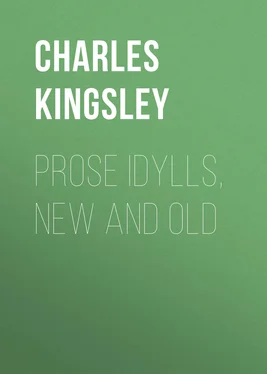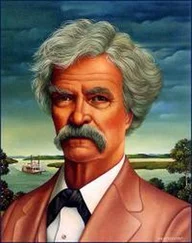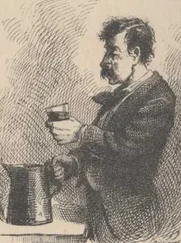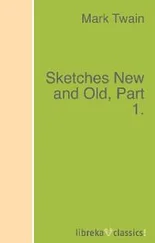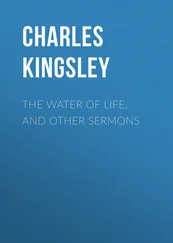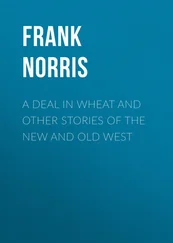Charles Kingsley - Prose Idylls, New and Old
Здесь есть возможность читать онлайн «Charles Kingsley - Prose Idylls, New and Old» — ознакомительный отрывок электронной книги совершенно бесплатно, а после прочтения отрывка купить полную версию. В некоторых случаях можно слушать аудио, скачать через торрент в формате fb2 и присутствует краткое содержание. Жанр: foreign_prose, foreign_antique, на английском языке. Описание произведения, (предисловие) а так же отзывы посетителей доступны на портале библиотеки ЛибКат.
- Название:Prose Idylls, New and Old
- Автор:
- Жанр:
- Год:неизвестен
- ISBN:нет данных
- Рейтинг книги:3 / 5. Голосов: 1
-
Избранное:Добавить в избранное
- Отзывы:
-
Ваша оценка:
- 60
- 1
- 2
- 3
- 4
- 5
Prose Idylls, New and Old: краткое содержание, описание и аннотация
Предлагаем к чтению аннотацию, описание, краткое содержание или предисловие (зависит от того, что написал сам автор книги «Prose Idylls, New and Old»). Если вы не нашли необходимую информацию о книге — напишите в комментариях, мы постараемся отыскать её.
Prose Idylls, New and Old — читать онлайн ознакомительный отрывок
Ниже представлен текст книги, разбитый по страницам. Система сохранения места последней прочитанной страницы, позволяет с удобством читать онлайн бесплатно книгу «Prose Idylls, New and Old», без необходимости каждый раз заново искать на чём Вы остановились. Поставьте закладку, и сможете в любой момент перейти на страницу, на которой закончили чтение.
Интервал:
Закладка:
2. Of the March-brown ephemera there is little to be said, save to notice Ronalds’ and Ephemera’s excellent description, and Ephemera’s good hint of fishing with more than one March-brown at once, viz., with a sandy-bodied male, and a greenish-bodied female. The fly is a worthy fly, and being easily imitated, gives great sport, in number rather than in size; for when the March-brown is out, the two or three pound fish are seldom on the move, preferring leeches, tom-toddies, and caddis-bait in the nether deeps, to slim ephemeræ at the top; and if you should (as you may) get hold of a big fish on the fly, ‘you’d best hit him in again,’ as we say in Wessex; for he will be, like the Ancient Mariner—
‘Long, and lank, and brown,
As is the ribbed sea-sand.’
3. The ‘governor.’—In most sandy banks, and dry poor lawns, will be found numberless burrows of ground bees who have a great trick of tumbling into the water. Perhaps, like the honey bee, they are thirsty souls, and must needs go down to the river and drink; perhaps, like the honey bee, they rise into the air with some difficulty, and so in crossing a stream are apt to strike the further bank, and fall in. Be that as it may, an imitation of these little ground bees is a deadly fly the whole year round; and if worked within six inches of the shore, will sometimes fill a basket when there is not a fly on the water or a fish rising. There are those who never put up a cast of flies without one; and those, too, who have killed large salmon on him in the north of Scotland, when the streams are low.
His tie is simple enough. A pale partridge or woodcock wing, short red hackle legs, a peacock-herl body, and a tail—on which too much artistic skill can hardly be expended—of yellow floss silk, and gold twist or tinsel. The orange-tailed governors ‘of ye shops,’ as the old drug-books would say, are all ‘havers;’ for the proper colour is a honey yellow. The mystery of this all-conquering tail seems to be, that it represents the yellow pollen, or ‘bee bread’ in the thighs or abdomen of the bee; whereof the bright colour, and perhaps the strong musky flavour, makes him an attractive and savoury morsel. Be that as it may, there is no better rule for a chalk stream than this—when you don’t know what to fish with, try the governor.
4. The black alder ( Sialis nigra , or Lutaria ).
What shall be said, or not be said, of this queen of flies? And what of Ephemera, who never mentions her? His alder fly is—I know not what; certainly not that black alder, shorm fly, Lord Stowell’s fly, or hunch-back, which kills the monsters of the deep, surpassed only by the green drake for one fortnight; but surpassing him in this, that she will kill on till September, from that happy day on which
‘You find her out on every stalk
Whene’er you take a river walk,
When swifts at eve begin to hawk.’
O thou beloved member of the brute creation! Songs have been written in praise of thee; statues would ere now have been erected to thee, had that hunch back and those flabby wings of thine been ‘susceptible of artistic treatment.’ But ugly thou art in the eyes of the uninitiated vulgar; a little stumpy old maid toddling about the world in a black bonnet and a brown cloak, laughed at by naughty boys, but doing good wherever thou comest, and leaving sweet memories behind thee; so sweet that the trout will rise at the ghost or sham of thee, for pure love of thy past kindnesses to them, months after thou hast departed from this sublunary sphere. What hours of bliss do I not owe to thee! How have I seen, in the rich meads of Wey, after picking out wretched quarter-pounders all the morning on March-brown and red-hackle, the great trout rush from every hover to welcome thy first appearance among the sedges and buttercups! How often, late in August, on Thames, on Test, on Loddon heads, have I seen the three and four pound fish prefer thy dead image to any live reality. Have I not seen poor old Si. Wilder, king of Thames fishermen (now gone home to his rest), shaking his huge sides with delight over thy mighty deeds, as his fourteen-inch whiskers fluttered in the breeze like the horsetail standard of some great Bashaw, while crystal Thames murmured over the white flints on Monkey Island shallow, and the soft breeze sighed in the colossal poplar spires, and the great trout rose and rose, and would not cease, at thee, my alder-fly? Have I not seen, after a day in which the earth below was iron, and the heavens above as brass, as the three-pounders would have thee, and thee alone, in the purple August dusk, old Moody’s red face grow redder with excitement, half proud at having advised me to ‘put on’ thee, half fearful lest we should catch all my lady’s pet trout in one evening? Beloved alder-fly! would that I could give thee a soul (if indeed thou hast not one already, thou, and all things which live), and make thee happy in all æons to come! But as it is, such immortality as I can I bestow on thee here, in small return for all the pleasant days thou hast bestowed on me.
Bah! I am becoming poetical; let us think how to tie an alder-fly.
The common tie is good enough. A brown mallard, or dark hen-pheasant tail for wing, a black hackle for legs, and the necessary peacock-herl body. A better still is that of Jones Jones Beddgelert, the famous fishing clerk of Snowdonia, who makes the wing of dappled peacock-hen, and puts the black hackle on before the wings, in order to give the peculiar hunch-backed shape of the natural fly. Many a good fish has this tie killed. But the best pattern of all is tied from the mottled wing-feather of an Indian bustard; generally used, when it can be obtained, only for salmon flies. The brown and fawn check pattern of this feather seems to be peculiarly tempting to trout, especially to the large trout of Thames; and in every river where I have tried the alder, I have found the bustard wing facile princeps among all patterns of the fly.
Of palmers (the hairy caterpillars) are many sorts. Ephemera gives by far the best list yet published. Ronalds has also three good ones, but whether they are really taken by trout instead of the particular natural insects which he mentions, is not very certain. The little coch-a-bonddhu palmer, so killing upon moor streams, may probably be taken for young larvæ of the fox and oak-egger moths, abundant on all moors, upon trefoils, and other common plants; but the lowland caterpillars are so abundant and so various in colour that trout must be good entomologists to distinguish them. Some distinction they certainly make; for one palmer will kill where another does not: but this depends a good deal on the colour of the water; the red palmer, being easily seen, will kill almost anywhere and any when, simply because it is easily seen; and both the grizzle and brown palmer may be made to kill by adding to the tail a tuft of red floss silk; for red, it would seem, has the same exciting effect on fish which it has upon many quadrupeds, possibly because it is the colour of flesh. The mackerel will often run greedily at a strip of scarlet cloth; and the most killing pike-fly I ever used had a body made of remnants of the huntsman’s new ‘pink.’ Still, there are local palmers. On Thames, for instance, I have seldom failed with the grizzled palmer, while the brown has seldom succeeded, and the usually infallible red never. There is one more palmer worth trying, which Scotsmen, I believe, call the Royal Charlie; a coch-a-bonddhu or furnace hackle, over a body of gold-coloured floss silk, ribbed with broad gold tinsel. Both in Devonshire and in Hampshire this will kill great quantities of fish, wherever furzy or otherwise wild banks or oak-woods afford food for the oak-egger and fox moths, which children call ‘Devil’s Gold Rings,’ and Scotsmen ‘Hairy Oubits.’
Читать дальшеИнтервал:
Закладка:
Похожие книги на «Prose Idylls, New and Old»
Представляем Вашему вниманию похожие книги на «Prose Idylls, New and Old» списком для выбора. Мы отобрали схожую по названию и смыслу литературу в надежде предоставить читателям больше вариантов отыскать новые, интересные, ещё непрочитанные произведения.
Обсуждение, отзывы о книге «Prose Idylls, New and Old» и просто собственные мнения читателей. Оставьте ваши комментарии, напишите, что Вы думаете о произведении, его смысле или главных героях. Укажите что конкретно понравилось, а что нет, и почему Вы так считаете.
